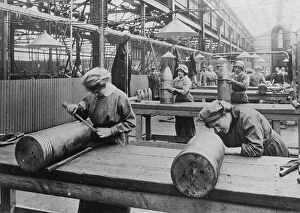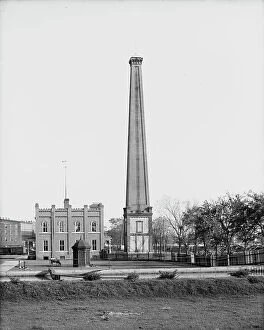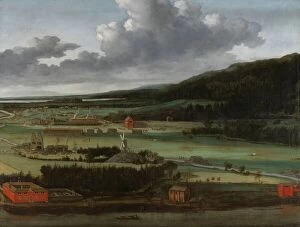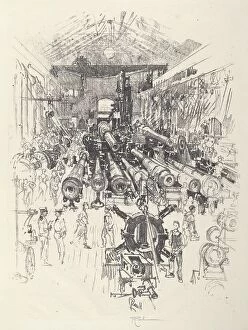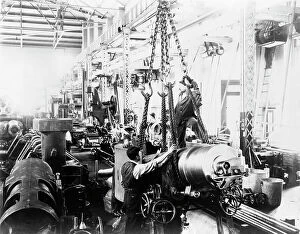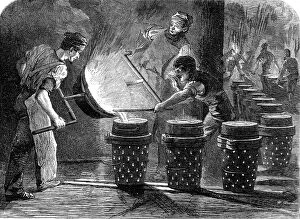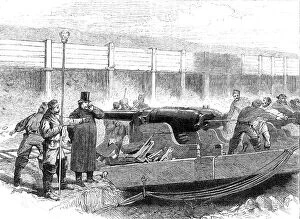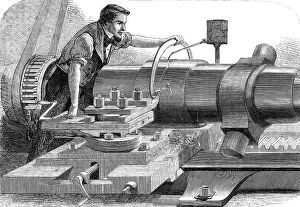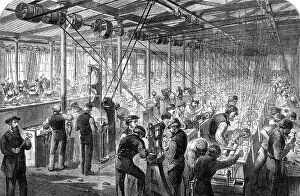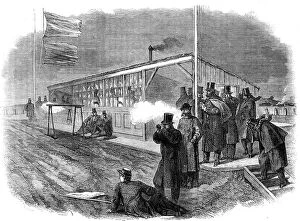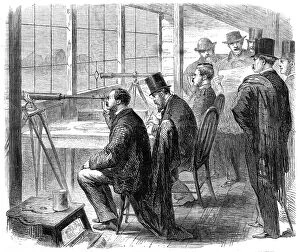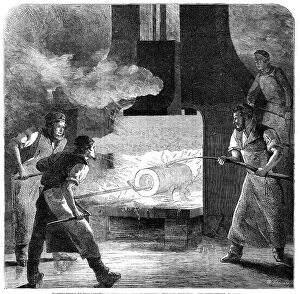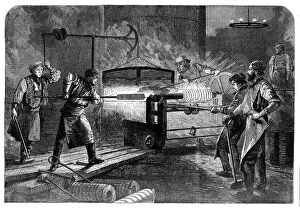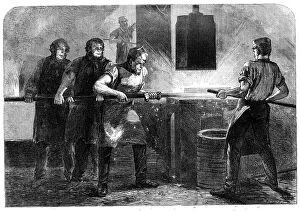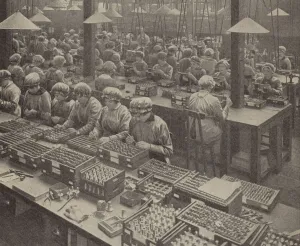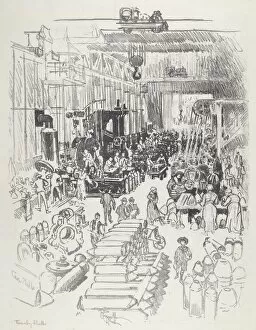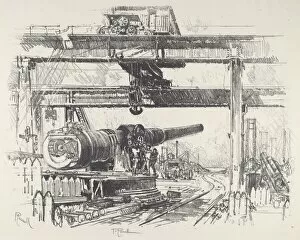Armaments Industry Collection
"The Evolution of the Armaments Industry
All Professionally Made to Order for Quick Shipping
"The Evolution of the Armaments Industry: A Historical Journey Through Trade Cards and Photographs" Step back in time with us as we explore the captivating world of the armaments industry. From trade cards bearing the names of renowned gunmakers like John Knubley and Samuel Brunn, to black and white photographs capturing English women munitions workers assembling fuses, these artifacts provide a glimpse into an industry that has shaped history. In 18th-century Britain, skilled craftsmen like John Knubley were revered for their expertise in creating firearms. The trade card bearing his name serves as a testament to his legacy, reminding us of the craftsmanship that laid the foundation for future advancements. Fast forward to the late 18th century and early 19th century when Samuel Brunn made his mark on the industry. His trade card showcases his dedication to innovation, hinting at new developments that would revolutionize weaponry. As we delve deeper into history, we encounter powerful images captured by Joseph Pennell during World War I. In one photograph titled "The Armour Plate Press, " we witness immense machinery used in manufacturing armored plates - a symbol of technological progress amidst conflict. Pennell's "In the Jaws of Death" transports us to a munitions factory where women diligently assemble fuses. Their contribution during wartime highlights not only their resilience but also how industries adapted to meet increased demand. "The Biggest Lathe in the World" reveals another facet of this ever-evolving industry - massive machines capable of shaping metal into formidable weapons. This image reminds us that size mattered when it came to producing arms efficiently on an industrial scale. From cutting and turning big guns to forging steel bars for shells, Pennell's photographs capture various stages within armament production processes. These images showcase both human labor and mechanization working hand-in-hand towards military might. Yet amidst all this power lies poignant reminders of sacrifice.

